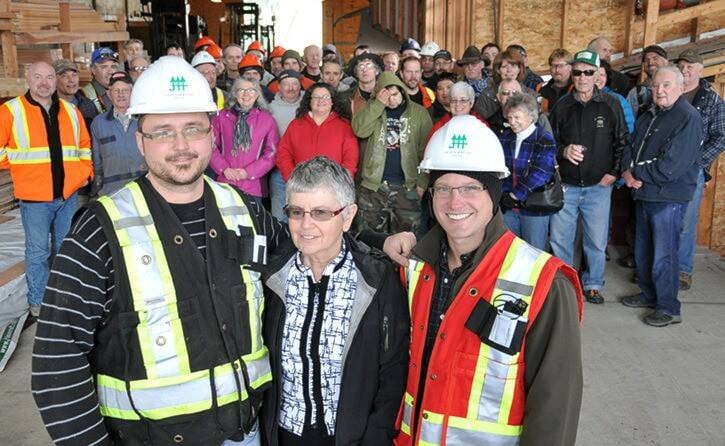Forestry is one of the pillar industries that contributes to the livelihood of many people across B.C., with Creston being no exception.
One of the local sawmills, J.H. Huscroft Ltd., provides a direct boost to the economy by employing 78 people.
The business was established in 1927 by John Henry Huscroft and his family. The Huscroft roots run deep in the Creston Valley, as they were one of the original pioneer families to settle in the area.
“It’s been a small family-owned and operated sawmill ever since,” said Chris Schofer, sales manager at J.H. Huscroft Ltd.
“We try to keep our business as local as possible by collaborating with Lordco, Comfort Welding Ltd., and Creston Truck Service Ltd. That money is spread around the community.”
In 2013, current CEO Justin Storm entered a purchase agreement for the sawmill and took over for Gwen Telling, the granddaughter of the late John Henry Huscroft.
READ MORE: Former manager retires from Creston Valley sawmill founded by grandfather
“It was universally supported by all the shareholders,” Telling said in an interview with the Advance in 2015.
“Justin was the sawmill manager and just a really bright guy. We felt he would carry on our goals.”
Storm is a Creston native with a long history with the sawmill. He began working there at age 16, eventually earning a millwright apprenticeship. He steadily moved up the ladder and became general manager in 2007.
Today, the sawmill supplies quality wood fiber in a variety of tree species ranging from douglas fir, western larch, lodgepole pine, western hemlock, and engelmann spruce.
Once trees are logged and transported to the sawmill, the logs are scaled to determine the quality of the wood. Then, the logs are fed into the sawmill to be debarked and cut to length. From there, the pieces are dried in a kiln to remove any moisture and prevent shrinkage. Once dried, the lumber is run through a planer to eliminate rough spots and ensure the product is flat on all sides.
“We supply mostly wholesale distributors across North America, with approximately 60 per cent of our sales in Canada and the other 40 per cent in the United States,” said Schofer.
“Lumber is the most renewable resource with the smallest carbon footprint. It creates less pollution to build with, comparatively to steel or concrete.”
To keep operations sustainable, J.H. Huscroft Ltd. is required to plant two trees for every tree that is harvested.
“Every forestry company has a specific quota that the government allows us to harvest from their land,” said Schofer.
“Our quota is 80,000 cubic metres, which is mostly harvested in the southern boundary area.”
For more information, visit jhhuscroft.com.
READ MORE: Creston Valley’s J.H. Huscroft Ltd. sawmill planning for sustainable future
